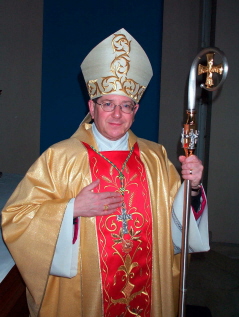In certain quarters, some are arguing that the holy French priest selected as the ideal for the Year for Priests isn’t necessarily the best model for the vocation in the 21st century.
From the Christian Science Monitor:
“Vianney is thought to be a useful model for many new Catholic priests in rural or developing nations,” says Andreas Batlogg, editor of the Jesuit-based Catholic intellectual journal Stimmen der Zeit in Munich, Germany.
Yet Benedict’s choice of Vianney caused loud and palpable groans in many parts of US and Europe. Modern-oriented Catholics and theologians see the choice as a political model of a priest closed off from society, overly idealized, hard for young Catholics to relate to, and one whose effect will be to increase a sense of distance between priests and ordinary people, and promote a view of priests more spiritually gifted than regular Catholics.
“We need an example, but this is a pastor of 230 people in a small French village in the 19th century,” says Mr. Batlogg.
Pope Benedict’s own experience as a priest dates to a brief post-war period in the almost wholly Catholic Bavarian countryside – a time the pope describes fondly in his writings.
Those pushing a different model say that priests work in a world Vianney had no idea of – crowded urban parishes with high-powered professionals, including women; a world of counseling on drugs and pornography, violence, and the other ills that flesh is heir to in a spiritually confused and values-conflicted world unlike French or Bavarian towns.
At the largest Benedictine school in the US, the education of new priests – which started 10 years ago under the influence of then-Cardinal Ratzinger – moved sharply toward the model of the priest educated in isolation, when Vatican directives began to forbid men and women educated together.
One member of the Benedictine order who is close to the university but was not authorized to speak to the media described the directives, which came out of Cardinal Ratzinger’s office, as part of a “purification of the church concept in which women should not be in the classes. A lot of us feel this creates instead a fortress church, a reclusive model…priests leave school and immediately go into communities and work with married people, and women, but have had little contact with either group in their priestly formation. This all originated in the Vatican.”
Some provocative ideas, to say the least. Check out the rest.

